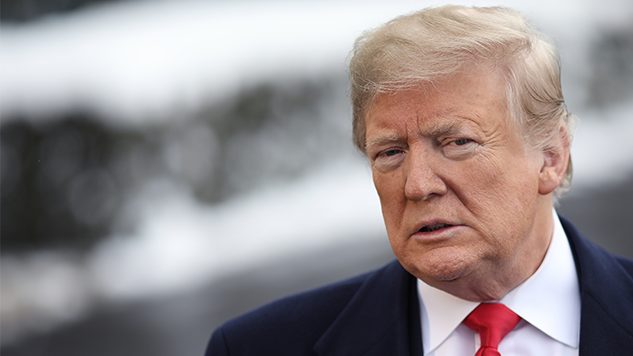Where Does the Senate Impeachment Trial Stand? A Quick Update
Photo courtesy of Getty
The Senate is officially beginning their impeachment trial today, but the actual substance of the trial (if there is going to be any) will take place next week. Today is filled mainly with formalities, so let’s recap what we can expect in the coming week and where everything currently stands going into just the third presidential impeachment trial in this nation’s history.
Step One: Draft and Vote on Ground Rules
Now that the House has formally impeached the president and sent the articles over to the upper chamber, the Senate will draft rules for how the trial will unfold. This is where the fight over calling witnesses and bringing in additional evidence comes into play. As it currently stands, the basic construct of the dispute is that the Democrats want to introduce new evidence like testimony from Trump’s former National Security Adviser John Bolton, or the explosive Lev Parnas interview on The Rachel Maddow Show last night, and the Republicans largely do not. Democrats have jumped on the recent report from the Government Accountability Office which found that the White House violated federal law when it withheld aid to Ukraine last year, asserting that it buoyed their case to subpoena additional evidence for the Senate trial. Now, certain Republicans like Mitt Romney have said they would like to hear from witnesses like John Bolton, but as we all should know by now, what elected Republicans publicly say and what they vote for are typically two very different things. We will know whether Mitt Romney and company are sincere and successful in their bid to add additional evidence to the trial by next Tuesday when the vote to codify the rules is expected to take place.
Step Two: Conduct the Trial Under the Ground Rules
Once the rules are voted on, the United States Chief Justice of the Supreme Court, John Roberts, will preside over the trial conducted by the prosecution from the Democratic House and the defense consisting of White House attorneys. The jury are the 100 Senators who cannot talk and can only submit written questions. The impeachment managers who will be prosecuting the case are Reps. Adam Schiff (chairman of the House Intelligence Committee), Jerry Nadler (chairman of the House Judiciary Committee), Zoe Lofgren (senior member of the House Judiciary Committee), Hakeem Jeffries (chairman of the House Democratic Caucus), Val Demings (a member of both the House Judiciary and Intelligence committees), Jason Crow (a freshman Representative who served as an Army Ranger in Iraq and Afghanistan), and Sylvia Garcia (a member of the House Judiciary Committee).
Theoretically, this is supposed to be conducted like a typical trial where the jurors are reserving their judgement before all evidence has been produced (although Justice Roberts’ role is less like a trial judge and more like a presiding officer), but given that it seems unlikely any new evidence will even be introduced in this trial, it already seems pretty clear which way the majority of jurors will vote.
Step Three: Senators Vote on Whether to Remove the President from Office
In order to remove Trump from office, the Senate needs 67 votes—meaning that if every Democrat and both Independents vote in favor of removal (a dubious assumption given that polling shows that a vote to remove Trump could hurt Democratic Senators like West Virginia’s Joe Manchin), Trump would need to lose 20 Republicans to get kicked out of office.
That is frankly, not happening, which begs the question: what is the point of all this? The way the founders envisioned this process was as an earnest one that would be as insulated from hyper-partisanship as possible, but we now find ourselves in a moment where the trial seems to be decided before it has even begun. It’s still possible that the GOP could reverse course on their insistence of not bringing any new evidence or testimony, but even then, it seems like their calculations on that topic are entirely political and not constitutional. The basic message we have received from the Republican-run Senate during the debate over the rules is that if America wants to get Trump out of office, the only way to do it is to vote for the Democratic nominee come November.
Jacob Weindling is a writer for Paste politics. Follow him on Twitter at @Jakeweindling.







































